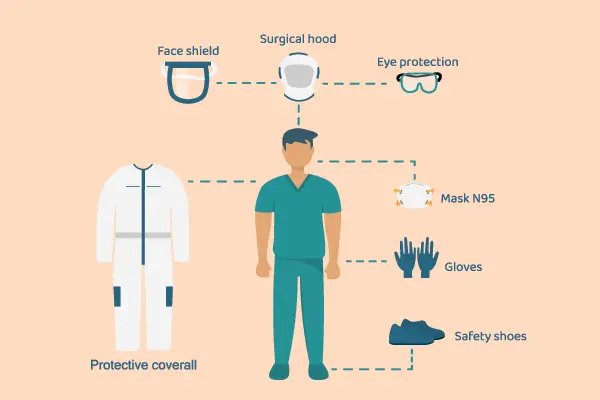Safety in the workplace is always paramount and the use of personal protective equipment (PPE) plays a crucial role in this. PPE is essential equipment that helps workers protect themselves from potentially hazardous conditions and injuries at work. They range from simple accessories to advanced technological devices, depending on the nature of the work and the risks to which workers are exposed.
What are Personal Protective Equipment?
Personal protective equipment (PPE) is equipment that individuals wear or use in the workplace to protect themselves from various risks such as physical, chemical, biological and ergonomic hazards. These resources are designed to minimize risks and ensure worker safety.
Reasons to Use Personal Protective Equipment
There are numerous reasons why the use of personal protective equipment is vital in the workplace:
- Risk reduction: PPE reduces the risk of injury or health damage from exposure to hazardous conditions.
- Legal obligations: In many countries, employers are required by law to provide PPE and instruct employees on its proper use.
- Increased Productivity: Employees who feel safe perform better and are more motivated to perform their tasks.
- Protection against Infections: In industries such as healthcare, PPE protects workers from contracting patient infections.
PPE Category Classification
Personal protective equipment is divided into several categories according to the nature of the protection they provide:
- Category 1: Simple PPE Category 1 includes personal protective equipment designed to prevent minimal risks. These PPE are intended for situations where the risk of injury or damage to health is low. Examples of Category 1 PPE are simple gloves and helmets that provide protection against superficial mechanical effects and minor impacts. These PPE are often comfortable and easy to wear, and they serve as a basic level of protection in the workplace.
- Category 2: Medium PPE Category 2 includes personal protective equipment that provides a higher level of protection than the simple PPE in Category 1. These PPE are intended for situations where the risk of injury or damage to health is moderate. Examples of category 2 PPE include safety glasses with side protection to protect eyes from chemical splashes and dust, as well as hearing protection such as earmuffs with a higher attenuation value to reduce exposure to noise in the workplace.
- Category 3: Complex PPE Category 3 includes personal protective equipment designed to protect against serious risks that can be potentially life-threatening. These PPE are intended for situations where the risk of injury or damage to health is high. Examples of category 3 PPE are full-body protection against chemical and biological hazards, breathing apparatus with filters to prevent inhalation of toxic gases, and protective clothing with specific properties such as flame-retardant materials for work environments with fire hazards.
In addition to these categories, PPE can also be divided into several subcategories, each aimed at protecting specific body parts:
- Head protection: Helmets and headgear to protect against falling objects or head injuries.
- Eye and Face Protection: Glasses, visors and masks to protect the eyes and face from particles, chemicals and radiation.
- Hearing protection: Earplugs and earmuffs to prevent hearing loss when exposed to noise.
- Respiratory protection: Masks and respiratory equipment to prevent inhalation of harmful substances.
- Hand and Arm protection: Gloves and arm guards to protect against cuts, chemicals and heat.
- Body protection: Clothing and equipment such as aprons and suits to protect the body from chemicals, heat and other hazards.
- Foot protection: Safety shoes and boots to protect the feet from falling objects and other hazards.
Obligations of Employer and Employee with regard to PPE
Both employers and employees have responsibilities regarding the use of PPE:
Employer:
- Ensure a safe work environment and identify potential risks.
- Provide the right PPE and ensure that it complies with legal standards.
- Instruct employees on the proper use, maintenance, and storage of PPE.
- Perform regular checks to ensure that PPE is used effectively.
Employee:
- Use the PPE provided according to the employer’s instructions and training.
- Report any defects or deficiencies in the PPE to the employer.
- Wear the mandatory PPE correctly at all times.
- Follow workplace safety regulations and guidelines.
Conclusion
Personal protective equipment is indispensable for the safety and well-being of employees in the workplace. The proper use of PPE significantly reduces the risk of injury and health problems. Both employers and employees play an essential role in ensuring a safe working environment. If you are looking for high-quality personal protective equipment, we cordially invite you to take a look at our webshop, where you can find a wide range of PPE that meets your specific needs. Your safety is our priority.
Choose safety. Buy your personal protective equipment at our reliable webshop.






